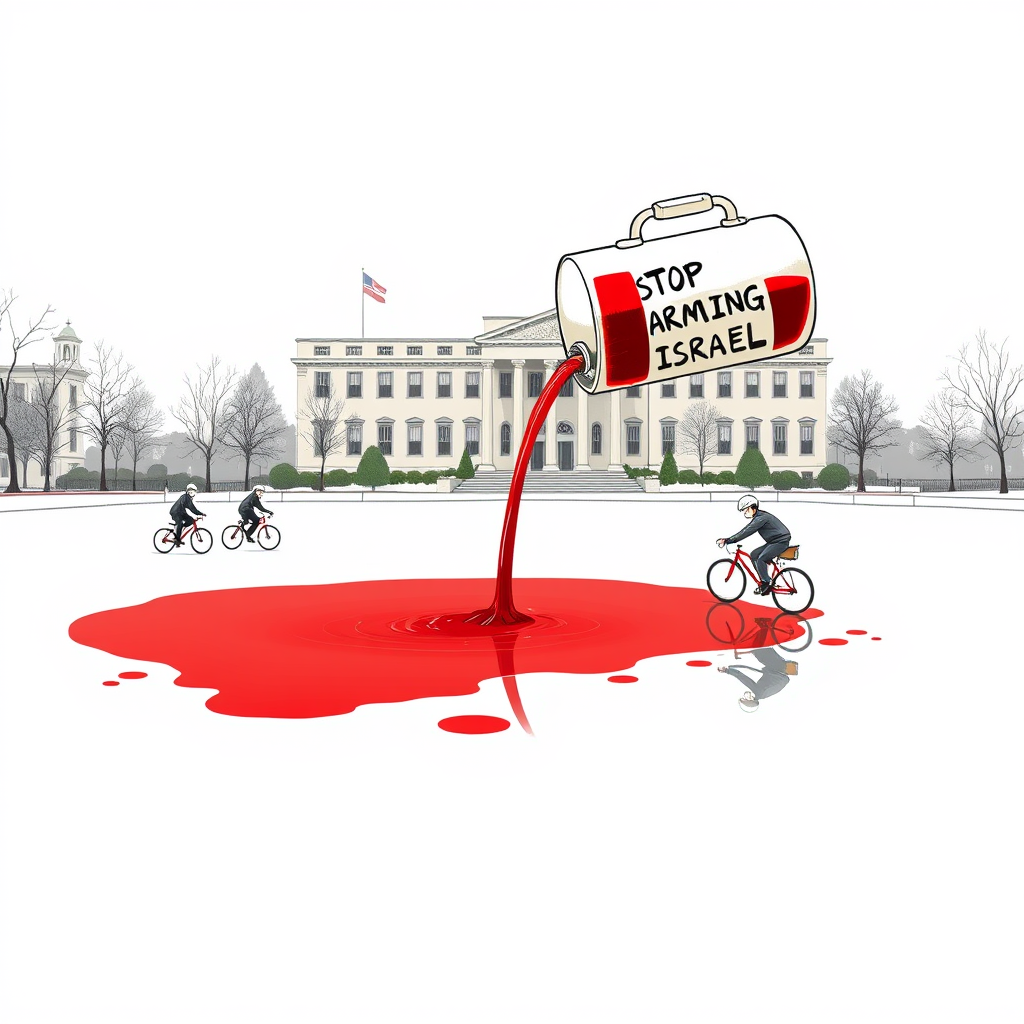Greenpeace Turns US Embassy Pond Blood Red

London – Greenpeace activists were arrested Thursday after a dramatic protest at the US Embassy in London, where they released 300 litres of red dye into the embassy’s pond, transforming the water into a symbolic representation of bloodshed. The demonstration aimed to condemn the ongoing conflict in Gaza and the United States’ continued military support for Israel.
Will McCallum, head of Greenpeace UK, led the group, arriving disguised as delivery cyclists. Video footage circulating on social media shows protesters carrying a container labelled “Stop Arming Israel” before emptying its contents into the water feature. Law enforcement swiftly responded, detaining McCallum and several other activists on suspicion of conspiracy to cause criminal damage – an offense carrying a potential ten-year prison sentence.
Greenpeace defended the action as a carefully planned and safe protest, explicitly linking the red dye to the casualties and destruction in Gaza resulting from US arms sales. Areeba Hamid, co-executive director of Greenpeace UK, emphasized the biodegradable nature of the dye while asserting the protest was a necessary message urging the US to cease its military support for Israel.
“We took this action because US weapons continue to fuel an indiscriminate war that’s seen bombs dropped on schools and hospitals, entire neighbourhoods blasted to rubble, and tens of thousands of Palestinian lives obliterated,” Hamid stated.
The protest highlights the growing international pressure on the US regarding its role in the conflict. Since the October 7th attacks reignited hostilities, over 50,000 Palestinians have reportedly died in Gaza. The US is Israel’s primary arms supplier, accounting for approximately two-thirds of its weapons imports. Under President Donald Trump, the US has authorized nearly $12 billion in military sales to Israel since January alone.
While acknowledging the potential legal consequences for the activists, it’s difficult to dismiss the protest as mere vandalism. It’s a stark, visually arresting demonstration intended to force a conversation about the human cost of conflict and the responsibility of nations providing military aid. The act, though controversial, effectively draws attention to a deeply troubling situation and the complex ethical questions surrounding international arms sales during wartime. The effectiveness of such tactics remains debatable, but the protest undeniably succeeded in generating significant media coverage and public discussion.